SaveGREEN - Closing a chapter: SaveGREEN holds final conference on ecological connectivity in Vienna
25-12-2022
For the past two-and-a-half years, the SaveGREEN project has focused on identifying, collecting, and promoting the best solutions for safeguarding ecological corridors in the Carpathians and other mountain ranges in the Danube region. Ecological corridors in the region are currently under threat, due mostly to a lack of adequate planning for economic development initiatives. Basing its work on integrated planning, SaveGREEN has monitored the impact of mitigation measures in eight pilot areas and has drafted relevant recommendations for follow-up actions and policy design.
On 6-7 December, the SaveGREEN project consortium gathered in Vienna, Austria, for its final conference at the Ministry of Climate Action and Energy building.
The event was opened by Mag. Sabine Kühschelm from the Austrian Federal Ministry for Climate Action. In her welcome speech, Kühschelm highlighted the importance of maintaining and preserving ecological corridors and expressed gratitude on behalf of the Ministry for being included as an Associated Strategic Partner (ASP) of the SaveGREEN project. Even though Austria has uniquely high standards for building new roads, Kühschelm acknowledged that the country’s existing road network does erect several barriers to ecological connectivity. While noting the SaveGREEN’s cross-sectoral collaboration endeavours, she also highlighted the standardised monitoring method as one of the project’s most important results.
A second welcome speech came from Andreas Beckmann, Regional CEO of WWF-CEE, the SaveGREEN Lead Partner and main host of the event. Beckmann thanked everyone involved in making SaveGREEN and its antecedent projects a reality; highlighted the enthusiastic and professional work of WWF CEE’s employees, project partners and ASPs; and expressed gratitude to Interreg for funding the project. Beckmann also reflected on the ongoing climate and biodiversity crisis, while emphasising the critical importance of ensuring the functionality of ecological corridors between protected areas. He also acknowledged SaveGREEN’s contribution to tackling the biodiversity crisis and project efforts to ensure that participating countries will take ecological connectivity fully into account.
The lively opening session was moderated by Csaba Mezei, General Secretary of CEEweb for Biodiversity, Hungary, a SaveGREEN project partner.
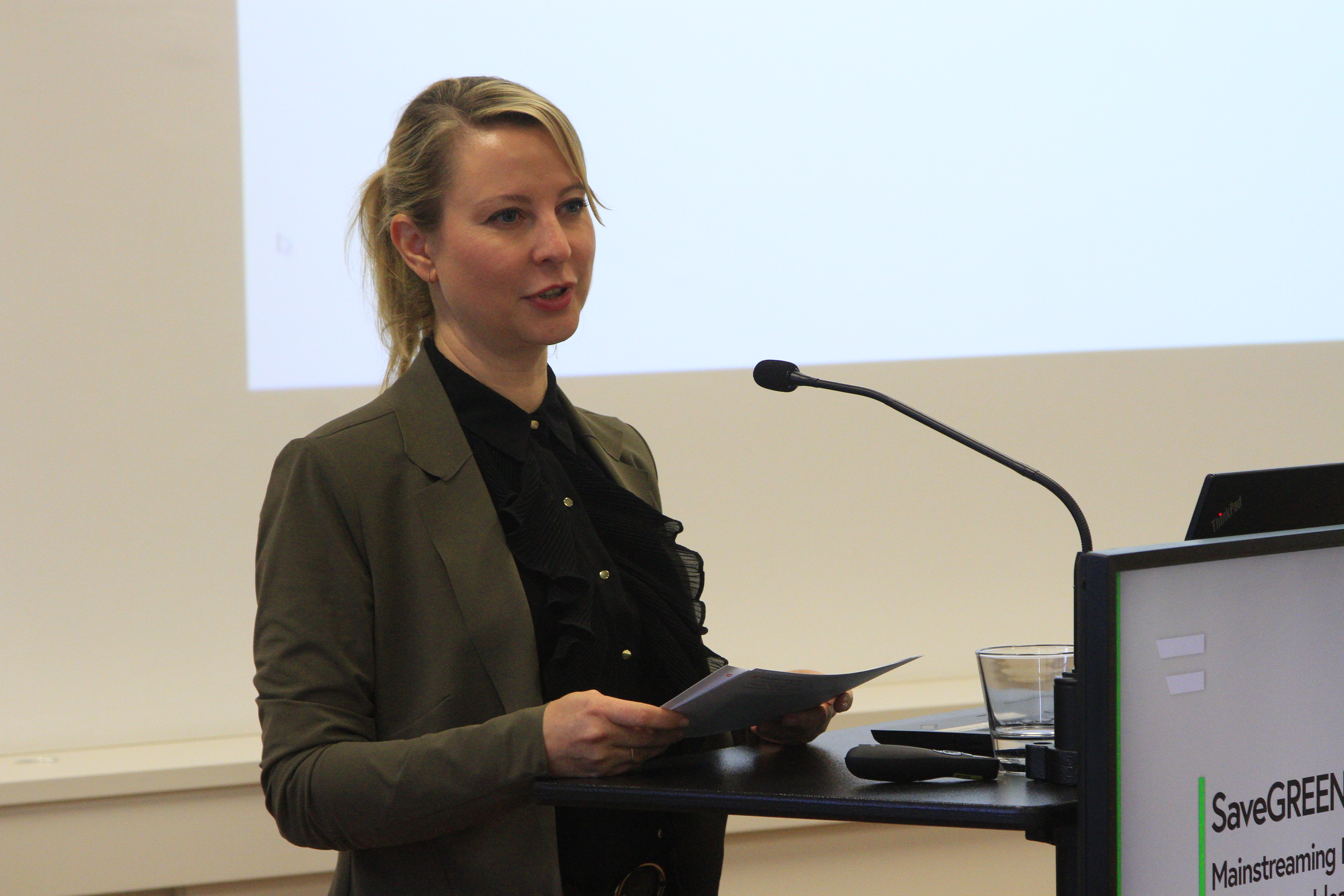

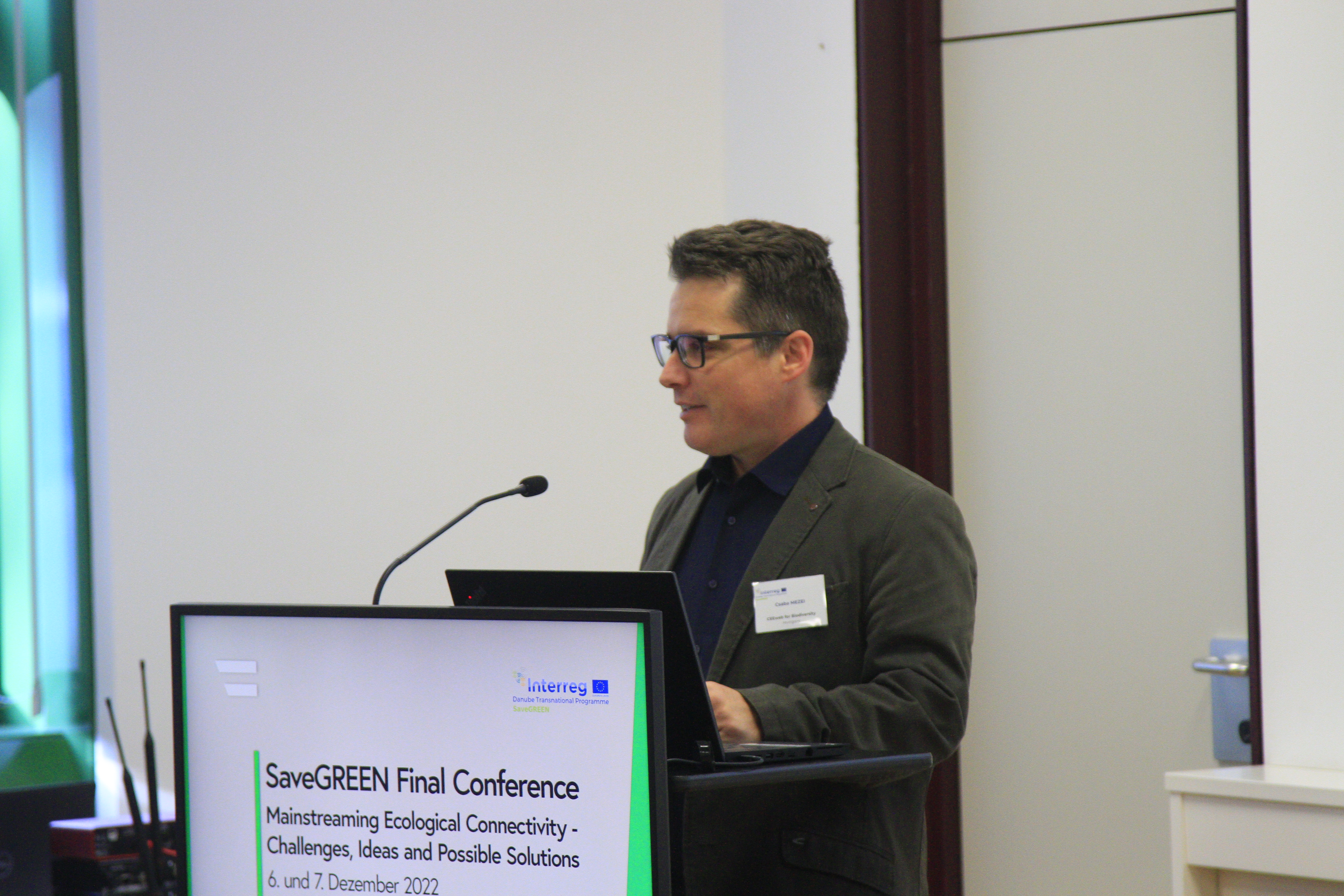
From left to right: Mag.a Sabine Kühschelm, Andreas Beckmann, Csaba Mezei
Day One highlights
Day One keynote speeches covered a wide range of perspectives, while Q&A sessions provided an ideal interactive platform for discussing different sectors, viewpoints, and experiences.
The first keynote speech, presented virtually by Wendy Elliott, was titled: “The global state of ecological connectivity and efforts to preserve it”. Following an introductory global overview, Elliott explained the correlation between ecological connectivity and biodiversity loss, while also bringing the human health crisis into the picture and stressing how ecological connectivity is at the heart of everything. In the second half of her presentation, Elliott presented indicators for measuring connectivity and reviewed several successful restoration projects. Her closing remarks addressed policy momentum and the private sector’s role in ensuring connectivity.
Henrique M. Pereira from the German Centre for Integrative Biodiversity Research, also presenting virtually, covered the topic of “Translating scientific knowledge into policy: the role of ecological connectivity in the Post-2020 Global Biodiversity Framework of the Convention on Biological Diversity”. Pereira reviewed the timeline of biodiversity targets and explained the failure to meet them, while also introducing ambitious new targets and opportunities for improved results within the Post-2020 Framework. The presentation also highlighted the importance of spatial planning, ecosystem service-based approaches, and implementation of appropriate monitoring measures within the Framework.
Przemyslaw Oginski from the Nature Conservation Unit, DG Environment, EU, gave the day’s third and final keynote speech on “Ecological connectivity in the EU Green Deal and Biodiversity Strategy 2030: expectations towards Member States regarding implementation and coherence across borders”. Oginski also reflected on the ongoing biodiversity crisis, both at global and EU levels. The presentation summarised the four pillars of the EU Biodiversity Strategy: 1) protecting nature, 2) the importance of restoration, 3) the need for transformative change to achieve ambitious targets, and 4) the EU’s contribution to the global agenda. The speech also raised the issue of financing, and especially the importance of business-sector involvement in achieving sufficient financial resources to meet targets.
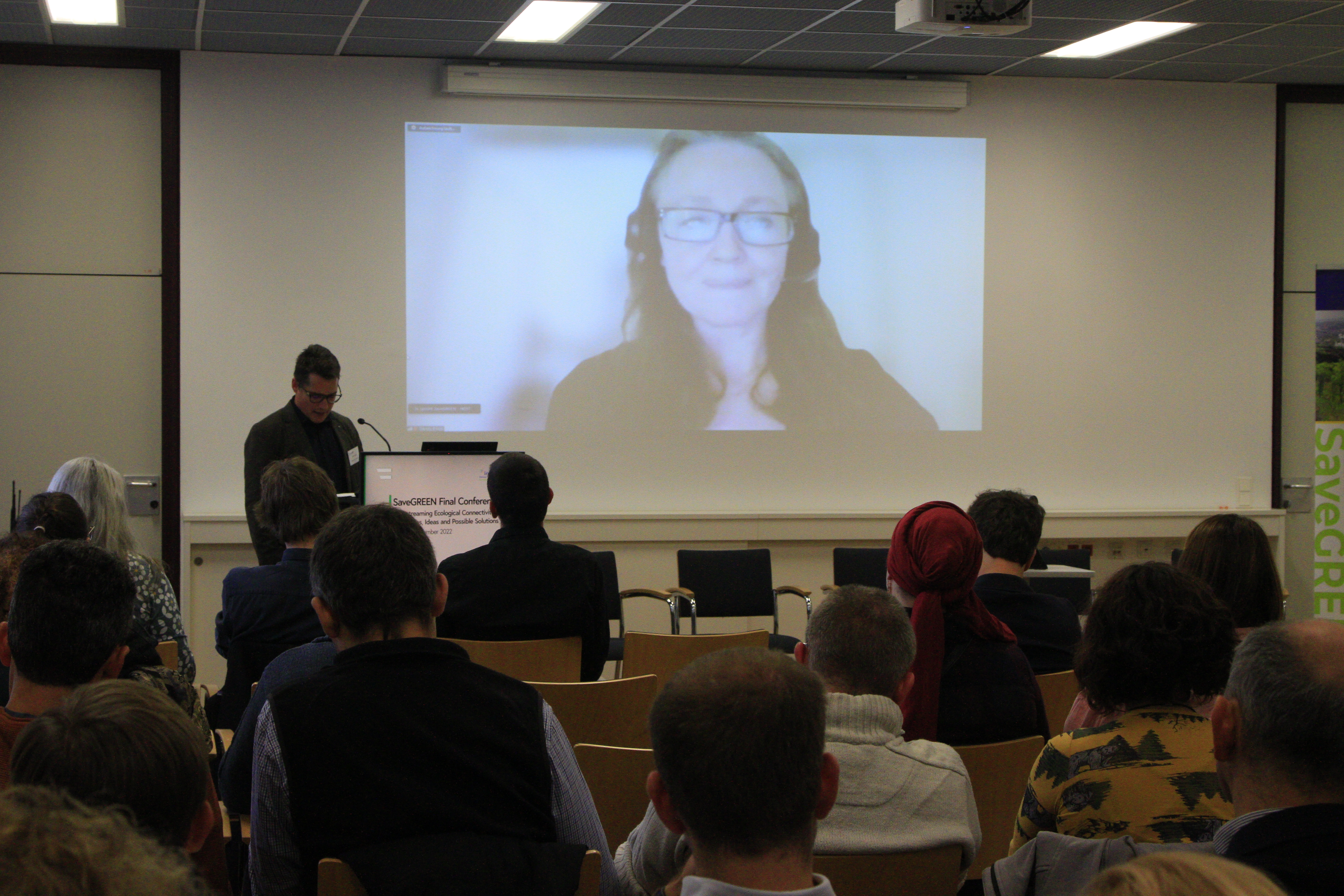
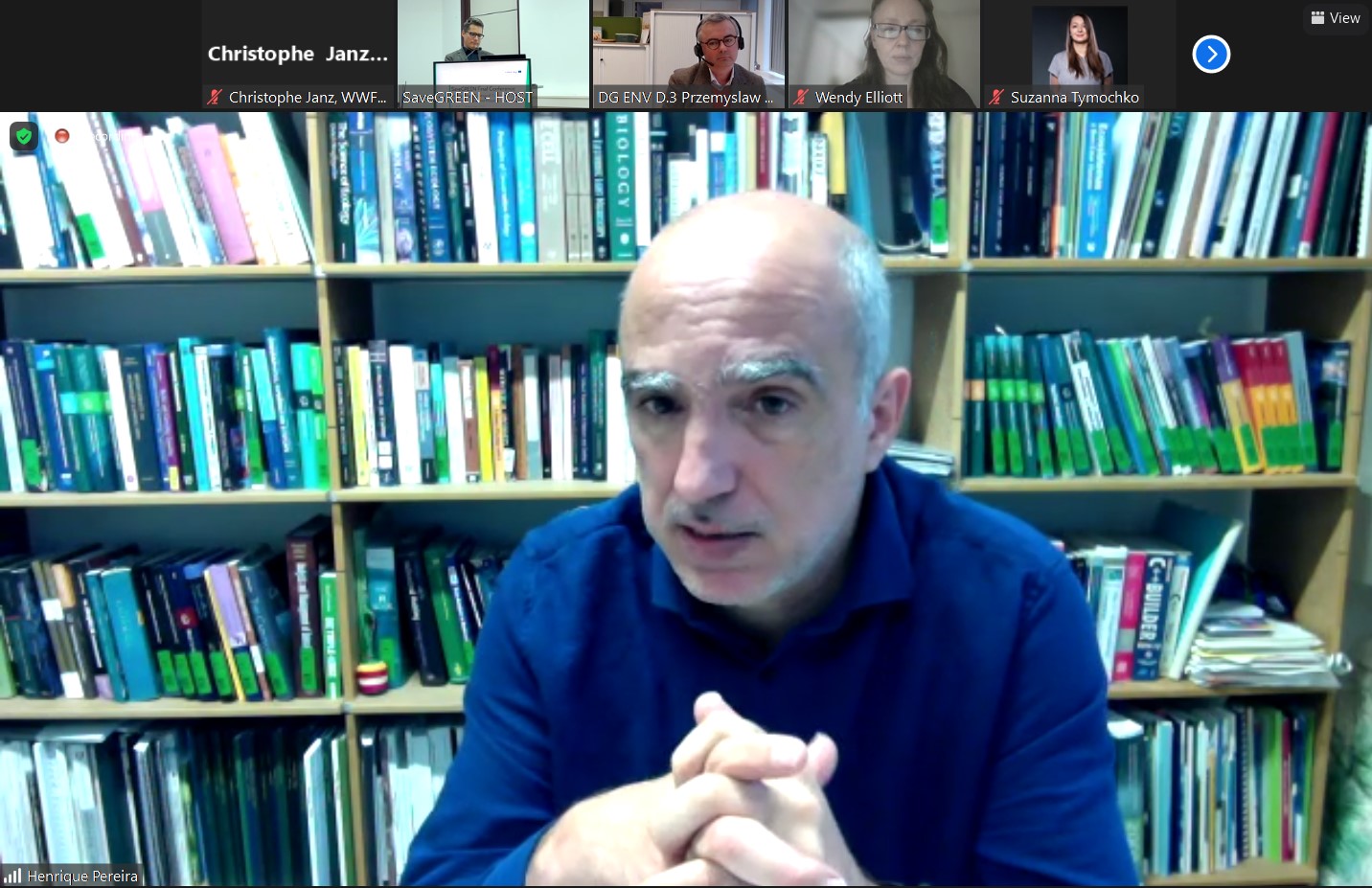
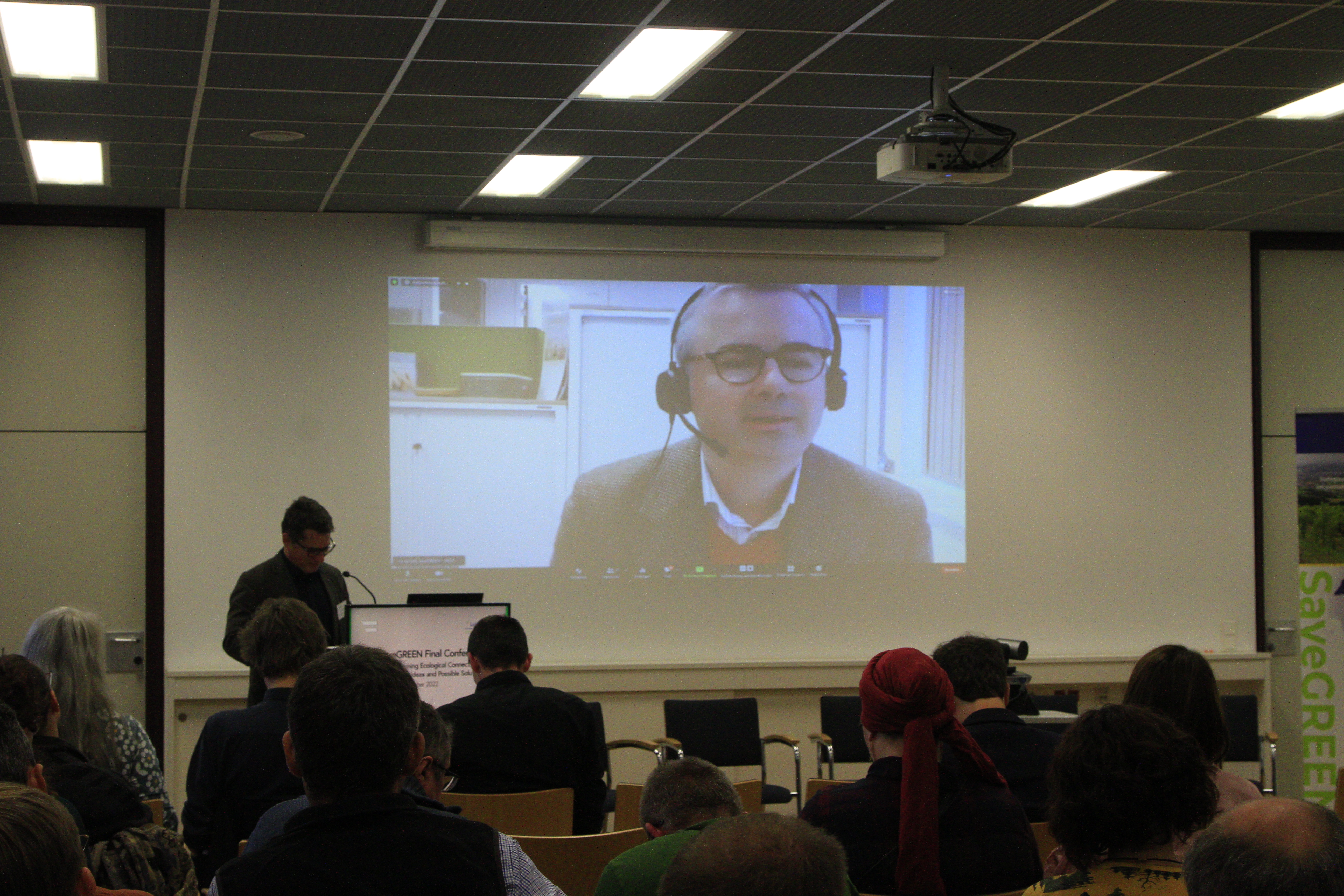
From left to right: Wendy Elliott, Henrique M. Pereira, Przemyslaw Oginski
The second thematic block for Day One was dedicated to SaveGREEN project results. The lead manager of the project, Hildegard Meyer, WWF-CEE, set the stage with a recap of the past two-and-a-half years. Meyer summarised the role of SaveGREEN in fostering cross-sectoral, transnational, and local cooperation, while highlighting the main aims and objectives in improving, restoring, and preserving the functionality of key ecological corridors in the Danube Basin. Pilot areas and their related project partners were introduced, as were the main project results, such as standardised monitoring methodology, local cross-sectoral plans, and capacity-building efforts – all of which provided background for a ‘Joint Declaration on Ecological Connectivity in the Danube-Carpathian Region’. The presentation’s main takeaway message was that “collaboration is the key to ensuring ecological connectivity in the region.”
Florian Danzinger from the Environment Agency Austria spoke next on “Standardised Methodology for Assessing Functionality of Ecological Corridors and the Application Toolbox”. Danzinger explained the differences between structural and functional connectivity, and gave an overview of how the monitoring process – both in terms of preparation and approach – was deployed in the Pöttsching pilot area in Austria. The speaker noted that “green bridges are great, but we always have to look at the surrounding landscape and the need for targeted restoration of degraded landscapes over the entirety of a bottlenecked area.”
Radu Mot of the Zarand Association spoke next on Cross-sectoral operational plans and SaveGREEN's work in the eight pilot areas. The speaker offered a clear definition of ‘landscape’ and highlighted the importance of a ‘landscape approach’. Mot then clarified the need for understanding the implication of our actions and, in detailing the impact of the transport industry’s impact on biodiversity, explained how interests should be aligned to achieve greater goals. In terms of pilot area actions, discussion of a three-step mitigation hierarchy (i.e. avoid, mitigate, compensate) helped underline the importance of planning at landscape scale. Mot concluded by emphasising the need to harmonise grey and green infrastructure.

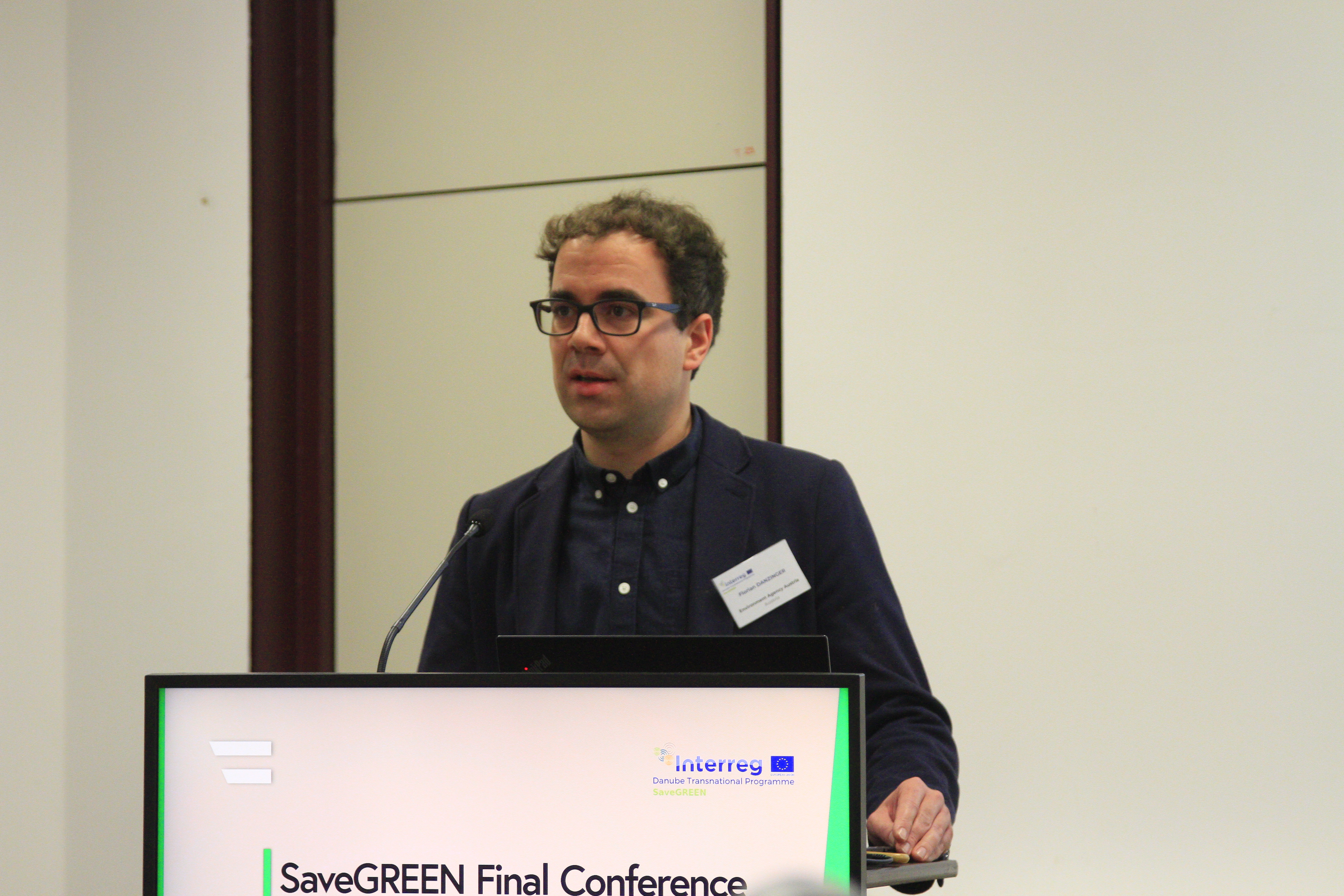
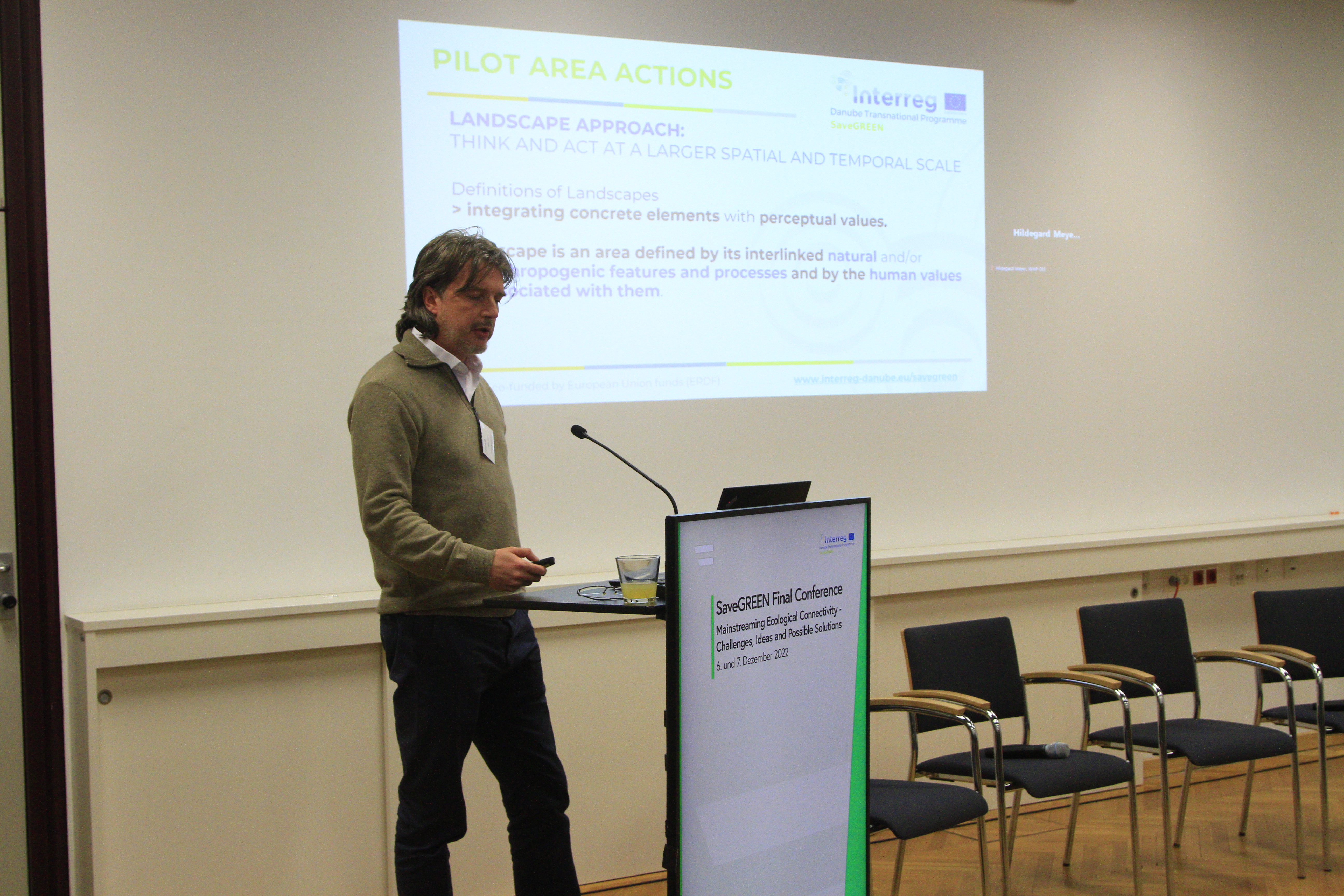
From left to right:Hildegard Meyer, Florian Danzinger, Radu Mot
Silvia Borlea, EPC Consulting, followed with a thorough review of a newly developed capacity building programme and related training events. Highlighted elements included: a gap analysis report on existing methodologies, an SEA and EIA process Toolkit, a Handbook for planning and implementing mitigation measures, and other Capacity building-related materials. Borlea then outlined some remaining tasks regarding the ‘Methodologies and Tools Work Package’.
Ioana Ismail, WWF Romania on the policy aspects of mainstreaming ecological connectivity into EU and global policies. The presentation introduced SaveGREEN’s policy and capacity-building efforts to enhance regional strategic cooperation and explained the events and interventions aiming to integrate the project’s recommendations of integrating green infrastructure into relevant policies and national standards. Ms. Ismail highlighted the need for a holistic approach in national and EU-level legislations, the importance of identification and designation of ecological connectivity, issues of GI funding, and the endeavours for enhancing dialogue between relevant stakeholders.
Day One’s final presentation came from CEEweb’s Eszter Sebestyén, who outlined project communication activities and the level of stakeholder engagement. Sebestyén presented elements of the communication toolkit, communicated the outreach numbers of different dissemination activities, and was pleased to announce that the project’s final activity, the ‘Twitter Adventure’ (which introduces all eight pilot areas in both English and local languages), has reached more than 320,000 people.
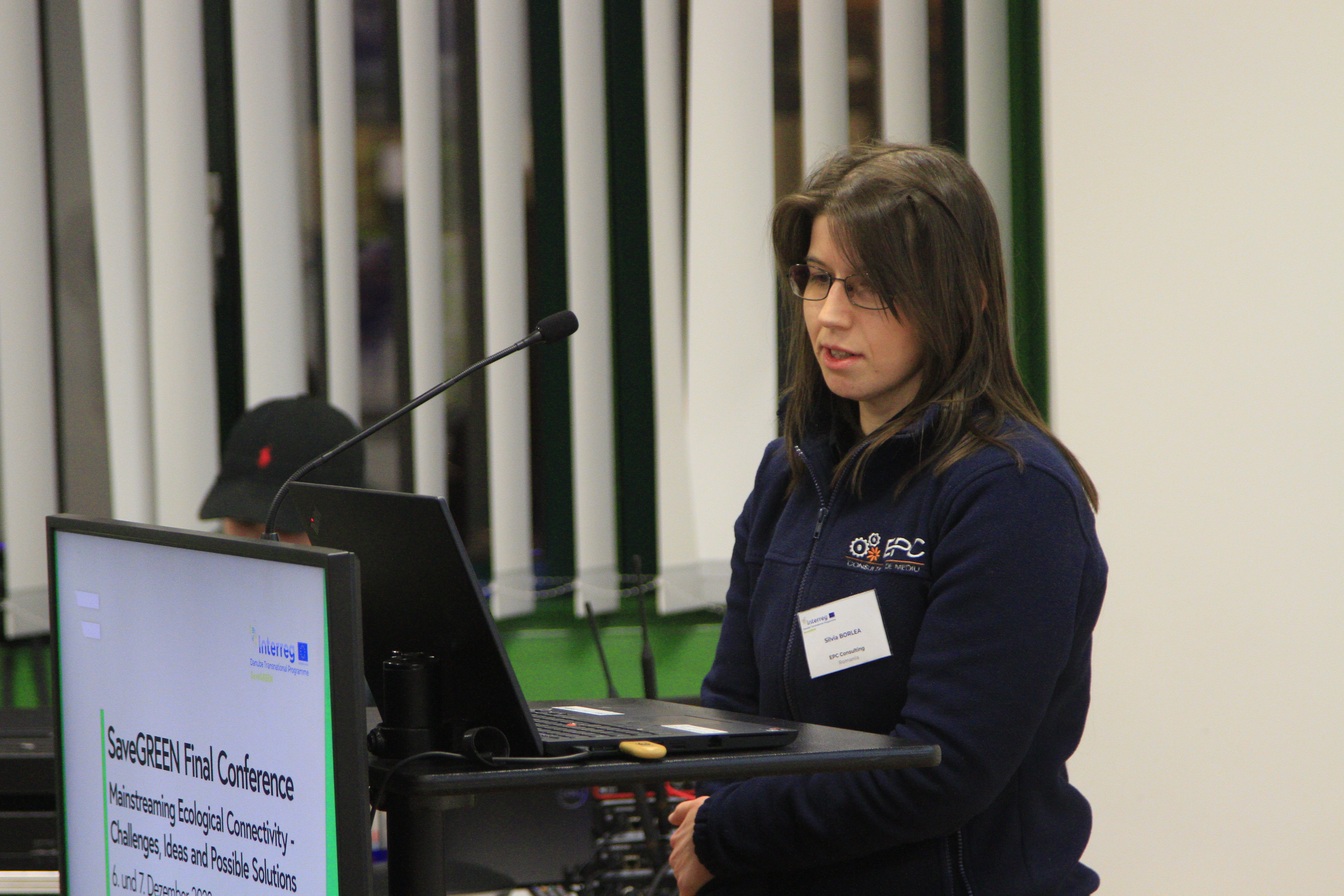
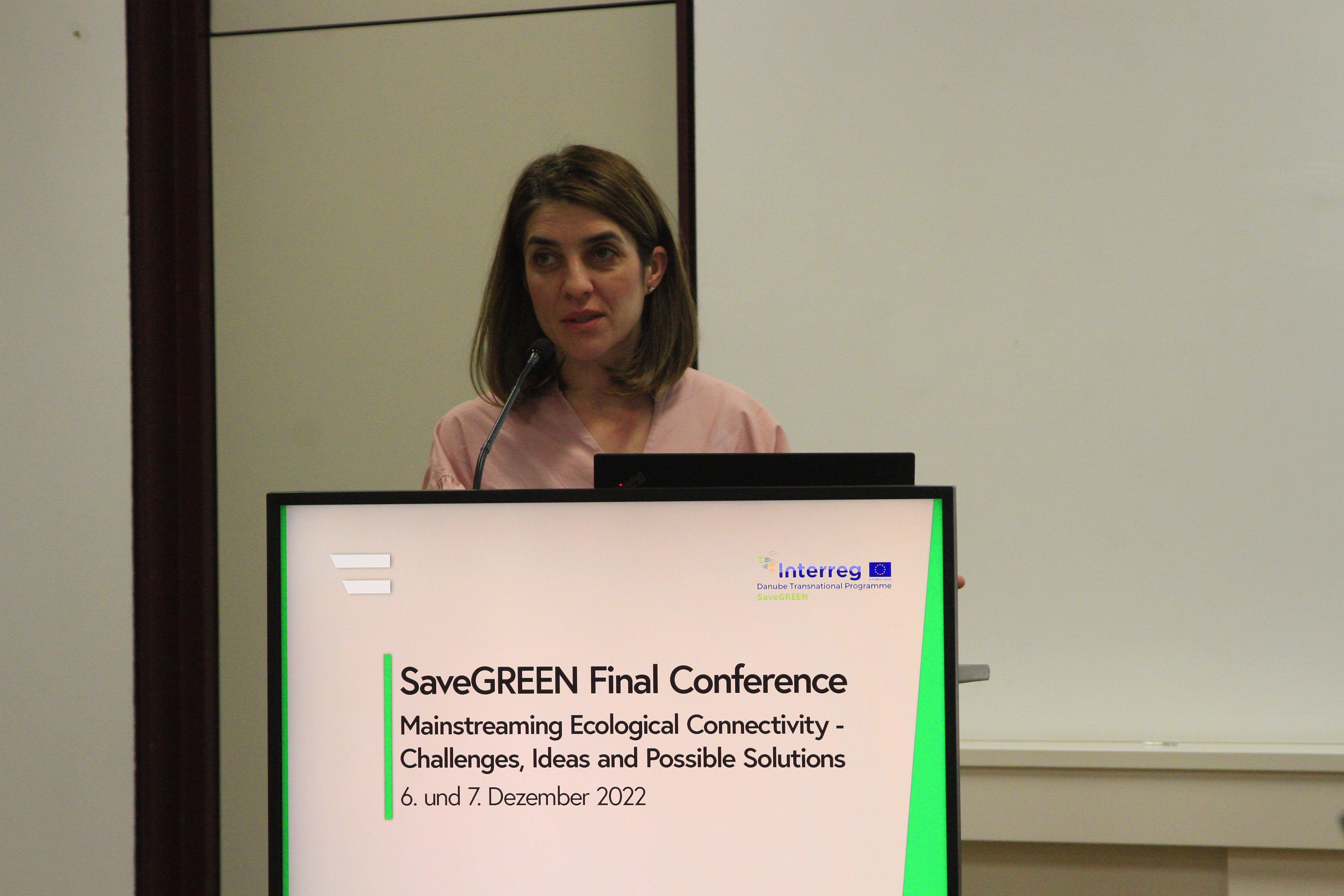
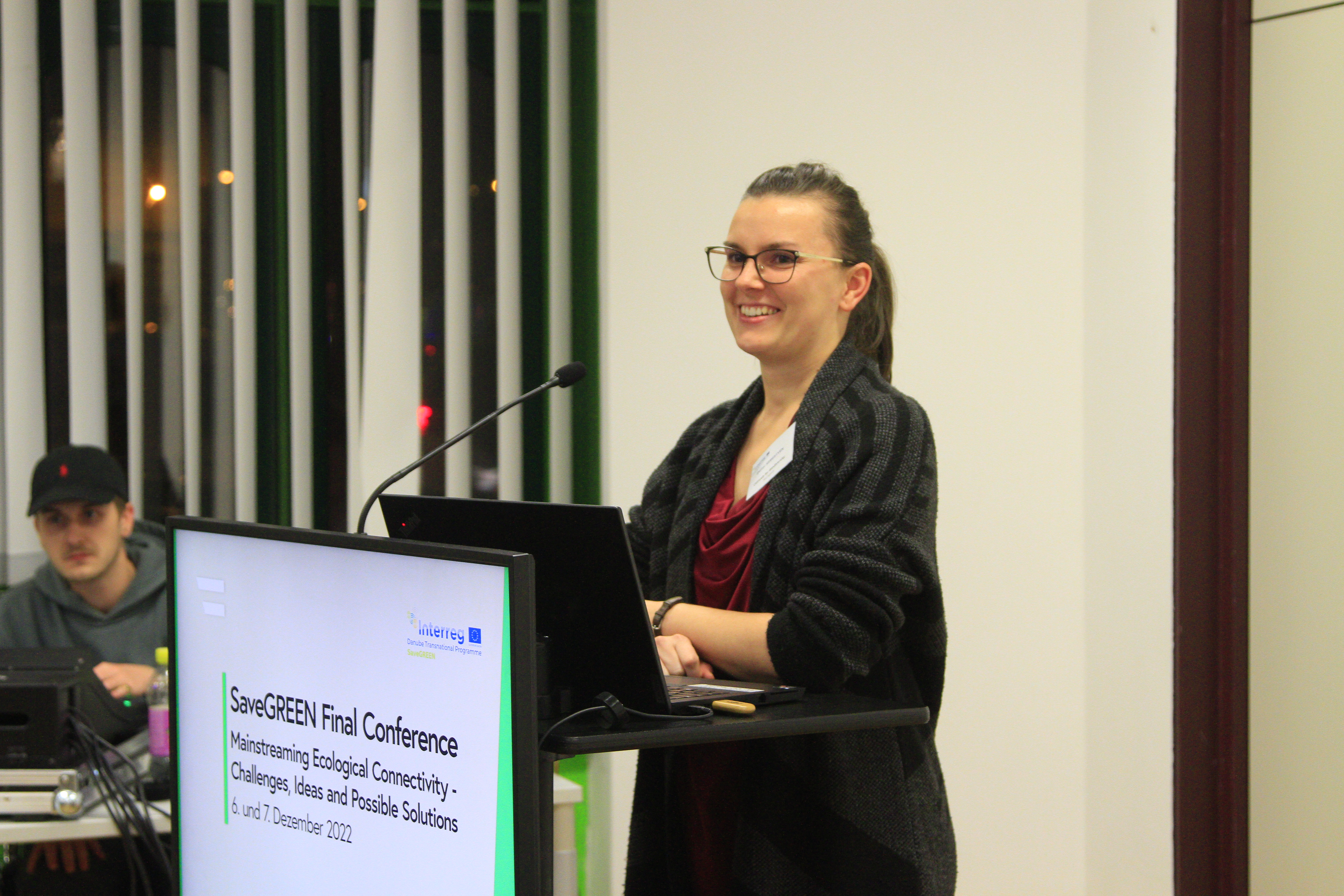
From left to right: Sivlia Borlea,Ioana Ismail, Eszter Sebestyén
Day One closed with a moderated panel discussion on success stories and lessons learnt. Associated Strategic Partners and experts were invited as panel participants. Csaba Mezei led the moderated discussion between Harald Egerer, Secretariat of the Carpathian Convention; Elke Hahn, Austrian Ministry for Climate Change; Lazaros Georgiadis, IENE; Svitlana Matus, Policy Expert on Ukraine; and Jana Culaková, State Nature Conservancy Slovakia. The panel discussed the value of the Joint Declaration, its methodology and possible application, the importance of cross-sectoral operational plans, and aspects of the capacity development programme. An open Q&A period followed the formal discussion.
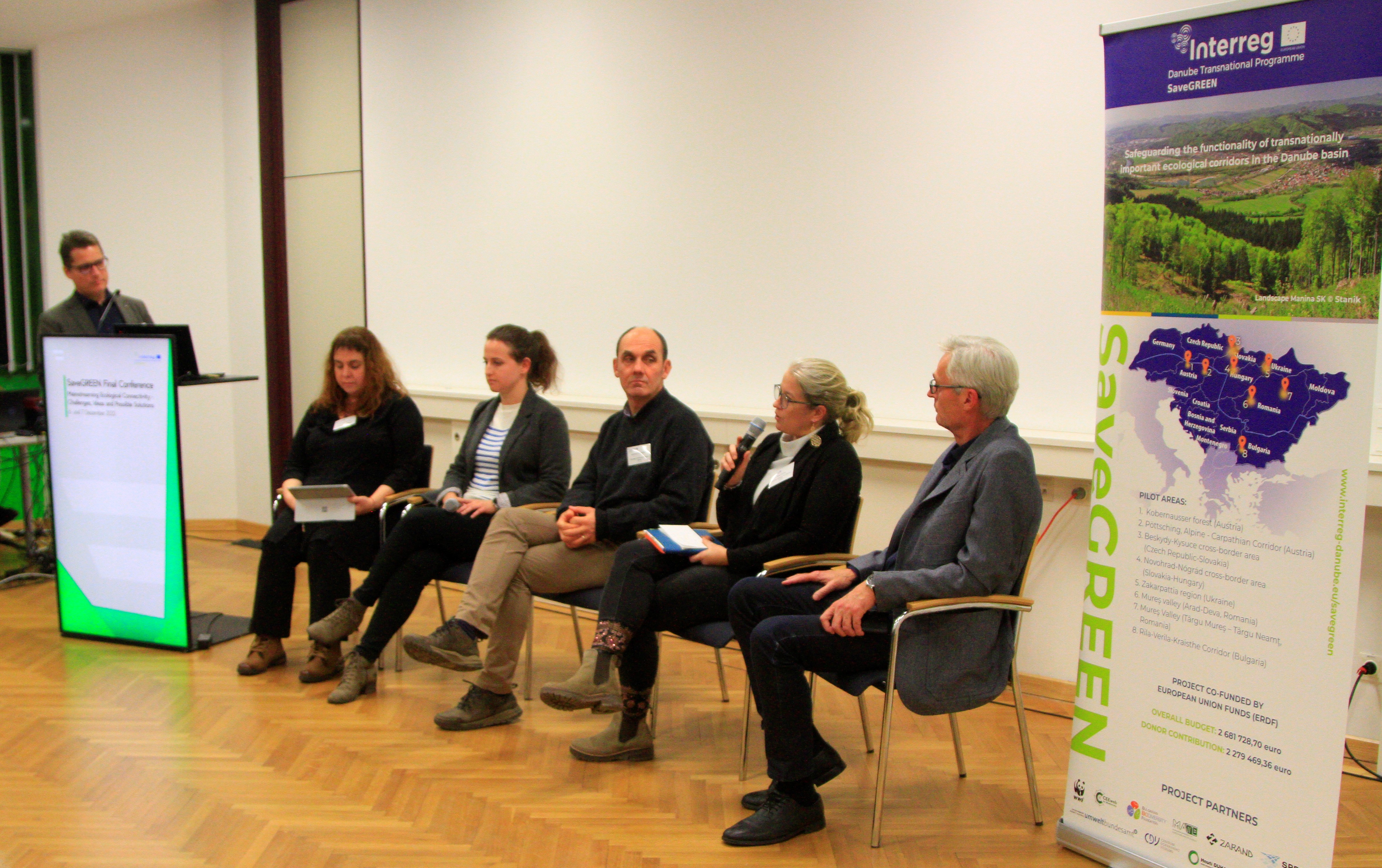
From left to right: Harald Egerer, Secretariat of the Carpathian Convention; Elke Hahn, Austrian Ministry for Climate Change; Lazaros Georgiadis, IENE; Jana Culaková, State Nature Conservancy Slovakia, and Svitlana Matus, Policy expert Ukraine
Day Two highlights
Marita Böttcher from the Leipzig branch office of the German Federal Agency for Nature Conservation kicked off Day Two with a keynote presentation on “Planning for ecological connectivity across Europe: challenges and possible implementation”. A main point was that there is no single ‘one size fits all’ solution or approach to maintaining ecological connectivity across the European landscape. Böttcher highlighted the importance of cross-border projects, while emphasising partner/stakeholder interaction and quality communication as essential towards supporting successful implementation and finding common levels of understanding.
The final keynote speech of the conference was given by Razvan Popa from the ADEPT Foundation in Romania. ADEPT is a multi-year EU nominee for “best communication with farmers”, “most innovative communication with farmers” and “bringing most benefits to communities in a protected area” awards. Popa spoke about "Ecological connectivity and agriculture as opportunity or restriction”, referring specifically to a case study from Târnava Mare, one of Europe’s most important High Nature Value (HVN), wildflower-rich, lowland grassland areas. Popa explained that, in farmed, semi-natural landscapes, the survival of biodiversity depends on continued management by local people who need to be informed and supported. He advocated for new solutions that promote economic rural development without undermining biodiversity.

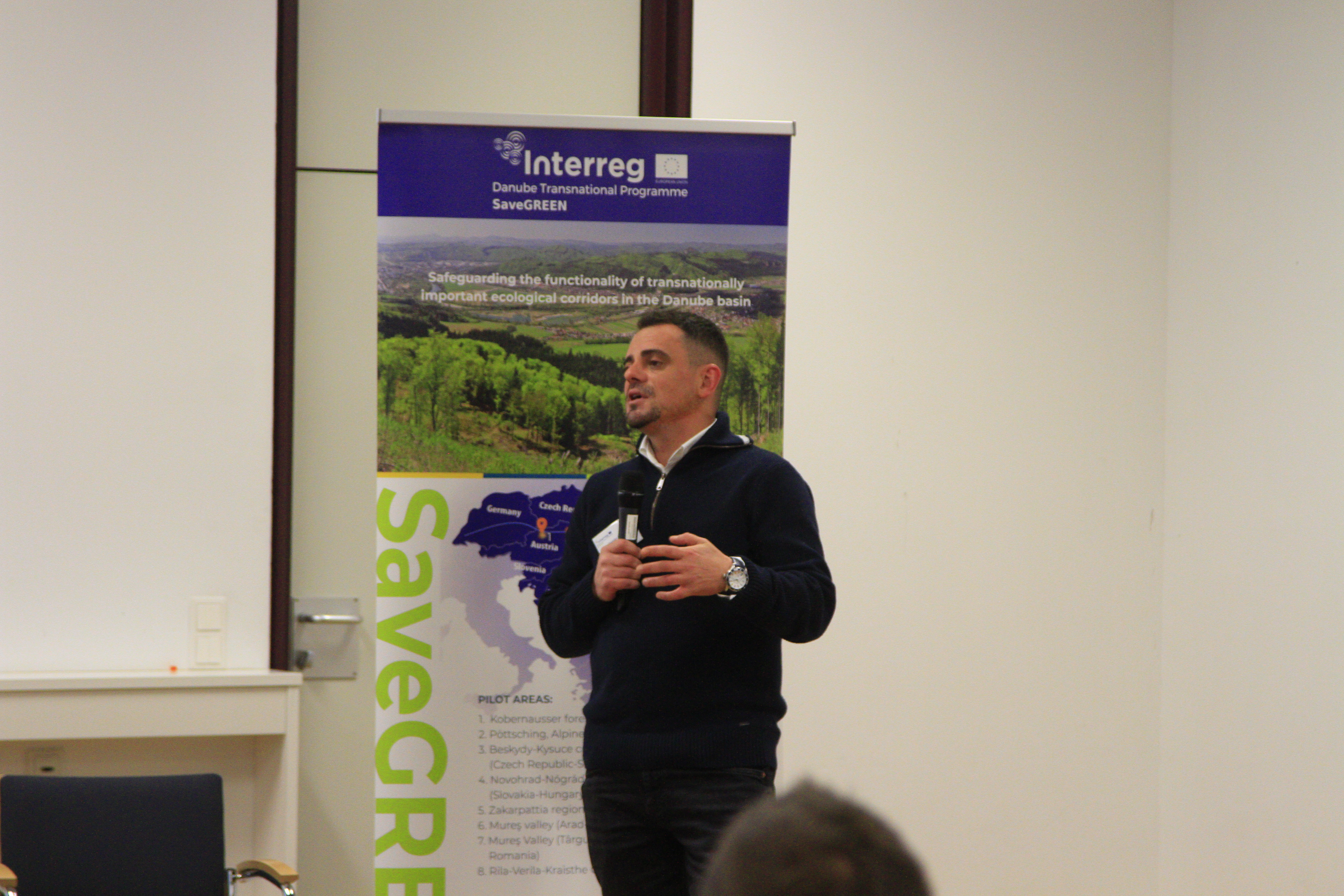
Exchange of experience with other projects and initiatives
"DaRe to Connect" project (Interreg DTP)
The first presentation on exchange of experience with other projects and initiatives was given by Stefan Fuchs, University of Vienna. Fuchs spoke specifically about “DaRe to Connect” (Interreg DTP), a four-and-a-half year project focused classifying and analysing habitats and connectivity-functionality along the European Green Belt (EGB). His main point was to highlight implementation of the EU Strategy for the Danube Region through further development of connectivity between protected areas along the EGB. Other main goals were to: identify ecological corridors between existing Natura 2000 areas and other protected areas along the EGB; maintain and enhance ecosystems and their services; improve capacities and levels of transnational and transboundary cooperation GOs and NGOs (also at a policy level); and support efforts to nominate the European Green Belt as a UNESCO World Heritage site.
MagicLandscapes project (Interreg Central Europe)
The second presentation, delivered virtually by Thomas Wrbka from the University of Vienna, was about the “MagicLandscapes” project (Interreg Central Europe). The project's main goal was to create a GI-related inventory of spatial structure, functionality, and ecosystem services at transnational, regional, and local levels. The inventory was developed through an integrated approach, taking both cross-sectoral policy and planning objectives into consideration. Multiple stakeholders (politicians, planners, land users/managers and communities invested in GI) provided decision-making support. Wrbka highlighted the role of raising awareness of the GI concept as an informal aid for spatial planning, and communicated the benefits of GI for nine case study areas through seven action plans.
Open Borders for Wildlife in the Carpathians project (ENI Cross-border Cooperation Programme)
Next up was Calin Ardelean, WWF Romania, with a presentation on the “Open Borders for Wildlife in the Carpathians” project (ENI Cross-border Cooperation Programme). This cross-border project (HU-SK-RO-UA) was dedicated to maintaining and improving ecological connectivity between habitats in nine pilot sites. The project successfully built Romania’s first functional network of ecological corridors and also formed RO-UA transboundary area, with the brown bear (Ursus arctos) as an umbrella species. Main project achievements include: a harmonised methodology and local action plan for identifying ecological corridors; identification of a network of cross-border ecological corridors; measures to ensure the conservation of large carnivores and sustainable development of communities; enhanced functionality of ecological corridors by improving the quality of ecotone areas and grassy vegetation in forest enclaves; improved capacity for the management and protection of ecological corridors through advocacy; and awareness-raising and education activities. Citing the fact that the project used social media posts to reach 500,000 people, Ardelean concluded by saying that “knowledge has no boundaries.”
DinAlp Connect (Interreg Adrion)
The day’s fourth presented project was “DinAlp Connect” (Interreg Adrion), introduced by Peter Laner, EURAC. The project, which ends in February 2023, aims to maintain ecological connectivity between the Alps and the Dinaric Mountains. Laner noted some of the main problems, such as political obstructions and climate change. Project objectives including strengthening transnational cooperation and upgrading capacity for assessing ecological connectivity. Main areas of project research (building on the AlpBioNet2030 and BioRegio methodologies) include:
- What are the priority areas and main barriers to ecological connectivity?
- What are the most important linkages?
- What are the best ways to protect the macro-regional north-south connection?
The project’s main findings and recommendations are to: prioritise macro-regional connections: protect corridors in bottleneck areas; create tunnels to bypass motorway barriers; introduce protected areas in Bosnia, Montenegro, and Albania; and check earmarked agricultural landscapes in detail and install linear green infrastructure. In highlighting regional linkages, Laner urged the installation of corridors via spatial planning, the inclusion of agriculture with mixed cropping, and utilisation of low-intensity livestock on corridor grasslands.
NaturaConnect project (HORIZON Europe)
Piero Visconti from IIASA gave the day’s final presentation. He talked about the ongoing “NaturaConnect” project (HORIZON Europe). Addressing the failure to meet objectives of the Birds and Habitats Directives, Visconti also pointed out that species and habitats would be far worse off without them. That being said, main obstacles to implementing the Directives include:
Lack of stakeholder awareness and cooperation (51% of respondents)
Insufficient knowledge of and access to existing funding mechanisms (58%)
Limited availability of knowledge about biodiversity distribution and drivers of change and solutions (48%)
Authorities lacking in expertise and/or experience (11%)
Lack of integration with spatial planning (9%).
Visconti suggested including “conservation and restoration priorities for establishing multifunctional corridors” in decision-making processes, and to create maps of conservation and/or restoration value of corridor connectivity under different scenarios.
Looking to the future: final brainstorming session
Day Two’s final agenda item was a brainstorming exercise in which participants were divided into groups to discuss gaps and opportunities related to research, policy, and implementation related to ecological connectivity. The outcomes are summarised below.
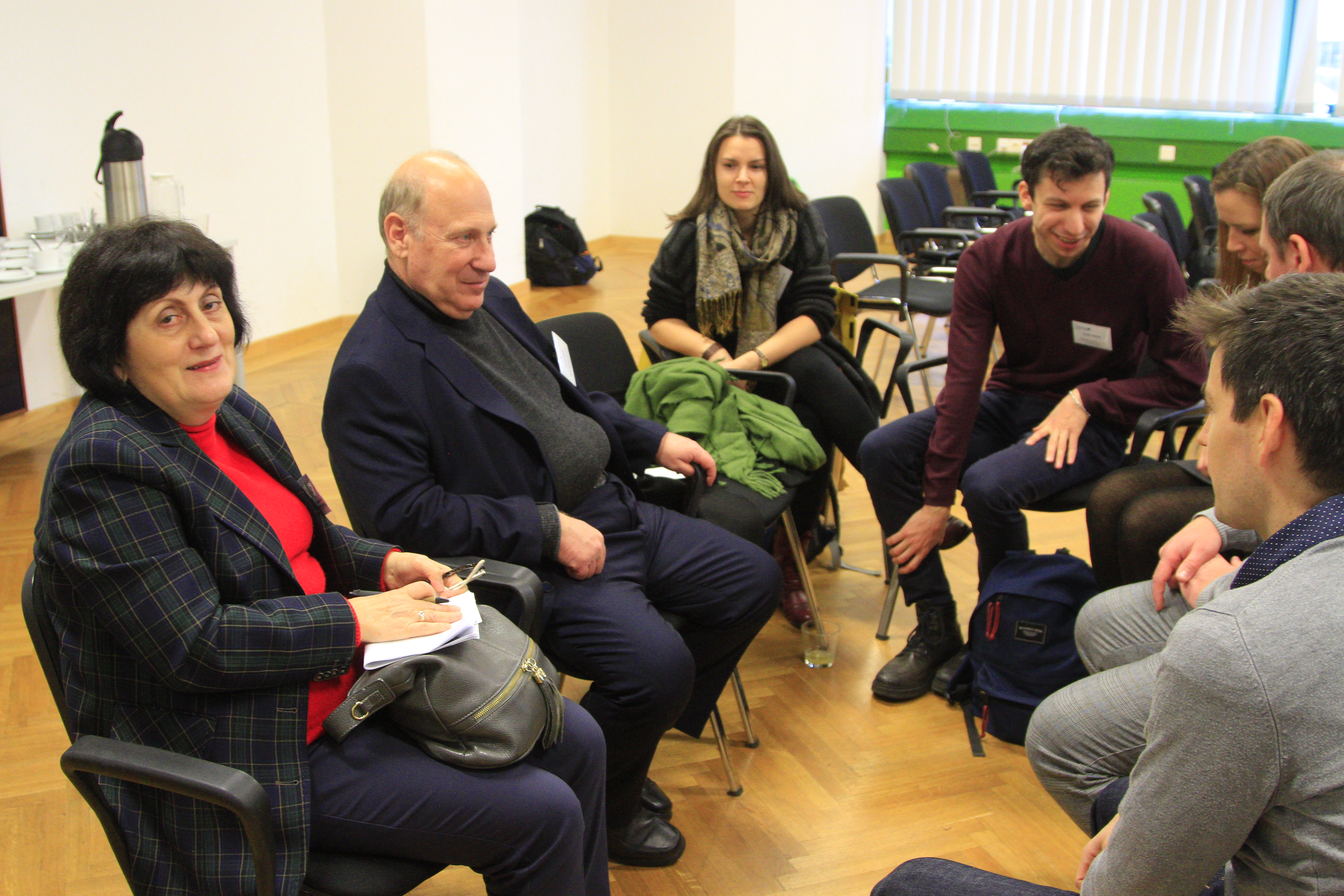
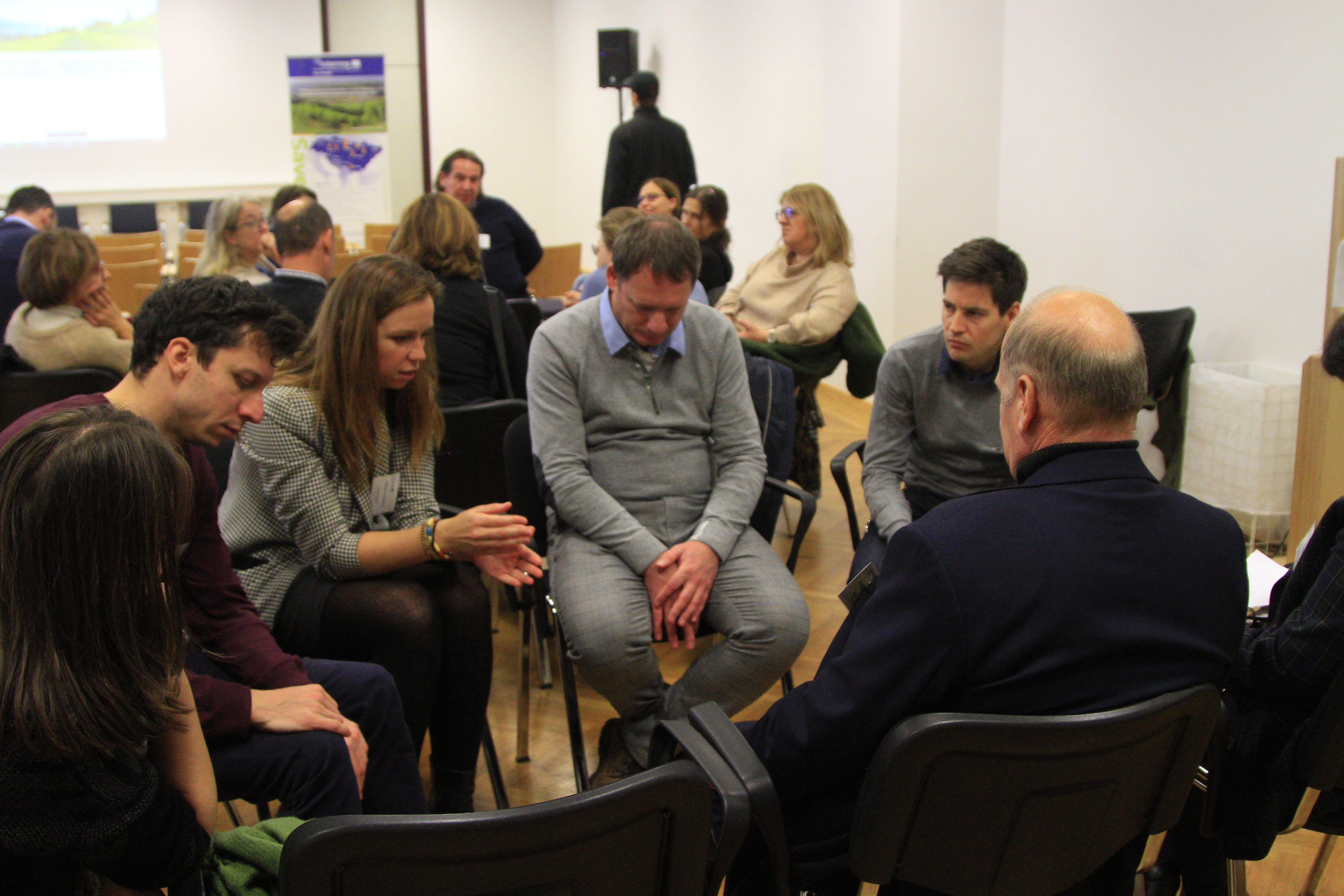
Group discussion on how to create better projects for ecological connectivity
Biggest findings on how to improve project research:
- Establishing a common terminology is extremely important
- Harmonise datasets
- Eliminate barriers between scientific fields (e.g. aquatic and terrestrial)
- Field actions should feature more prominently in projects
Biggest findings on how to improve project funding policy:
- Create a national fund for connectivity projects (further scoping is needed to identify potential sources)
- EU-level policies are too ‘top down’ oriented, and EU DGs often have competing agendas
- Make connectivity more attractive to private sector donors
- Follow up projects through the LIFE programme or within new financing models (e.g. blanket financing)
Biggest findings on how to improve project implementation:
- Highlight where positive action within one sector is blocked by other sectors
- Include policymakers in the implementation of large-scale projects to ensure better uptake of results
- Define implementation and offer clear directions for individual sectors
- Define target groups more clearly (e.g. Who are the implementing actors?)
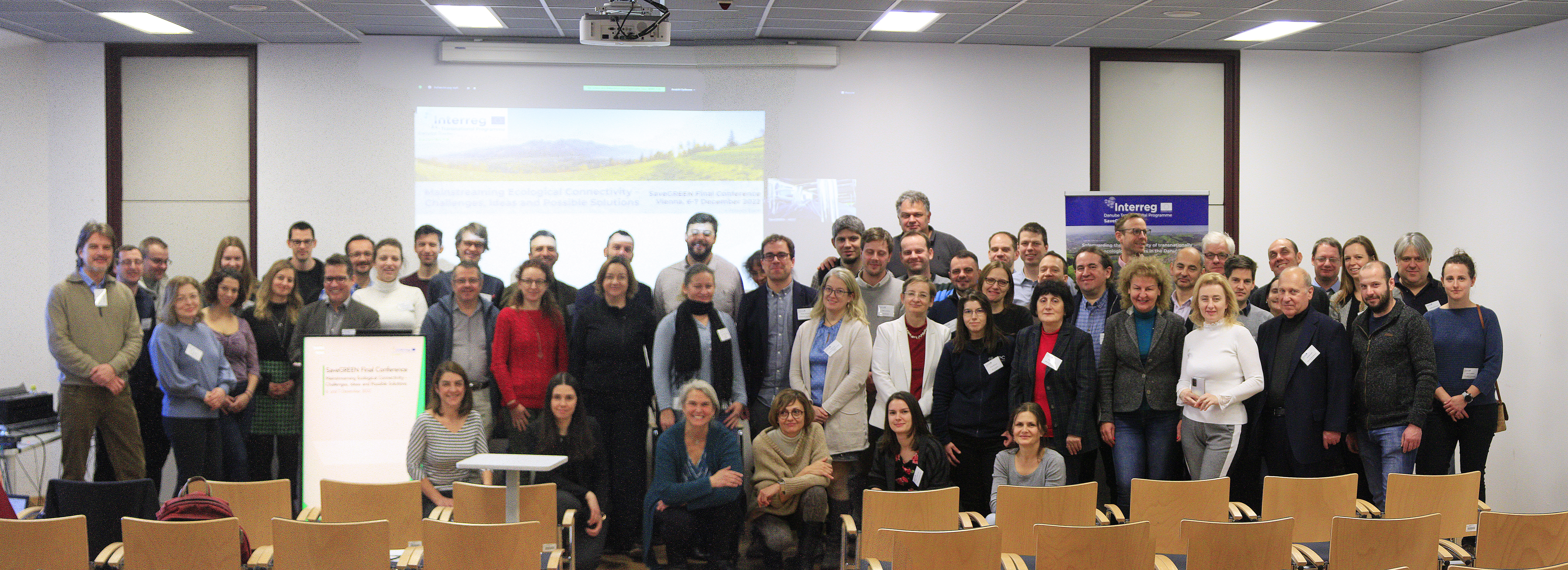
Final words and wrap-up of the event and the project
After a fruitful and forward-looking brainstorming session, Mezei gave the floor to Hildegard Meyer for some final thoughts to close the event – and the SaveGREEN project. Meyer thanked the consortium, the partners, and all of the conference attendees for participating in the journey, and expressed hope for a bright future of ecological connectivity. The GREEN project ‘trilogy’ thus draws to a close, and its legacy will be determined by future experts and stakeholders.
For more information and materials from the final conference click here.
